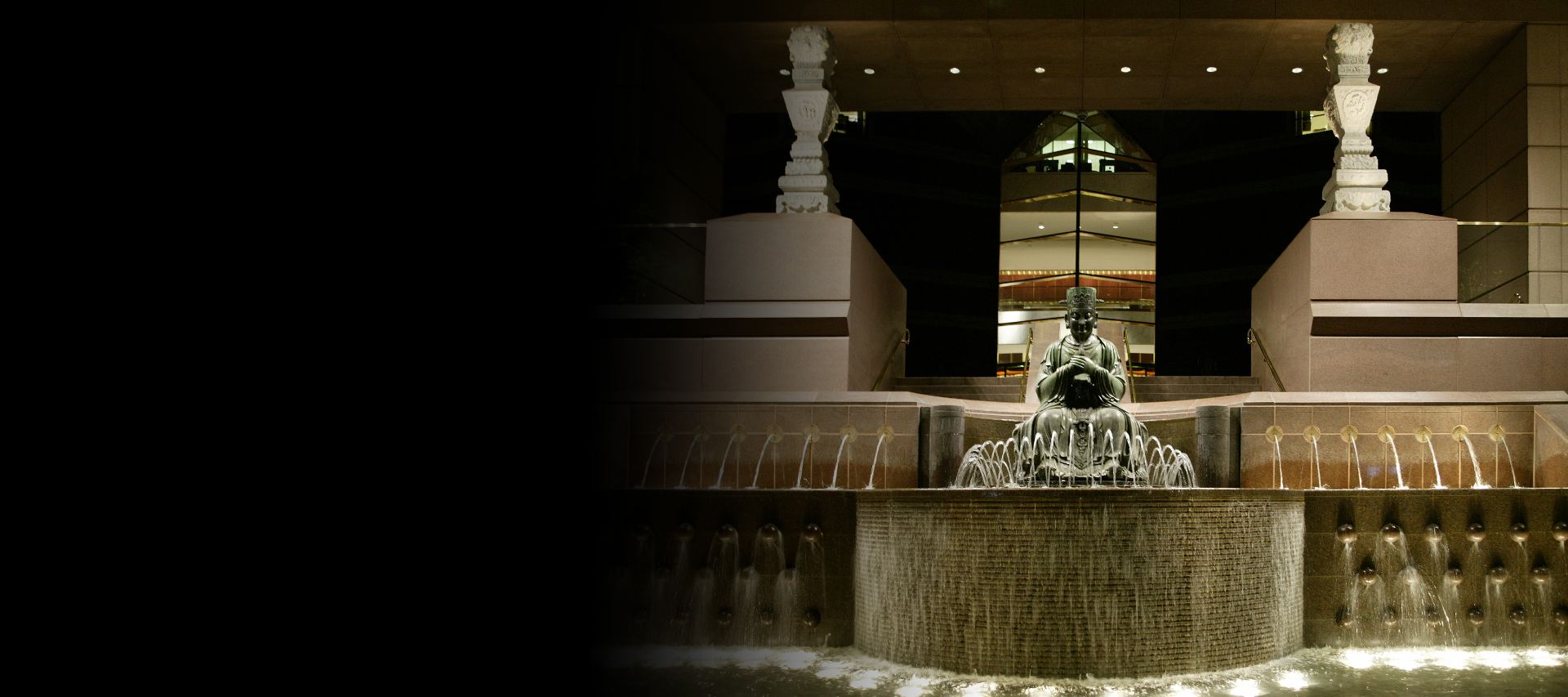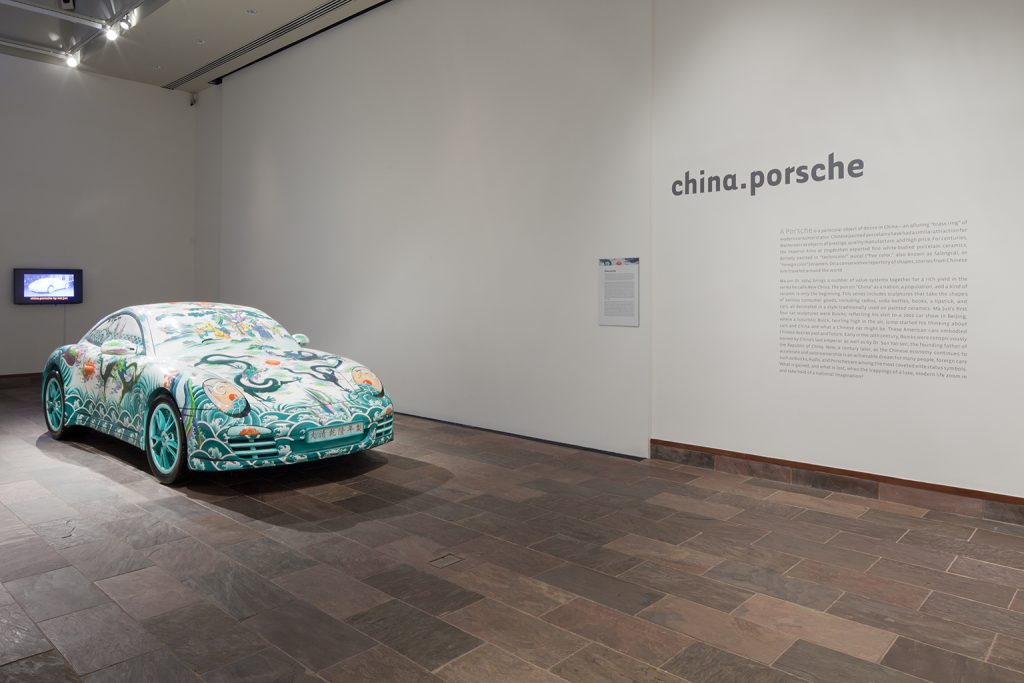
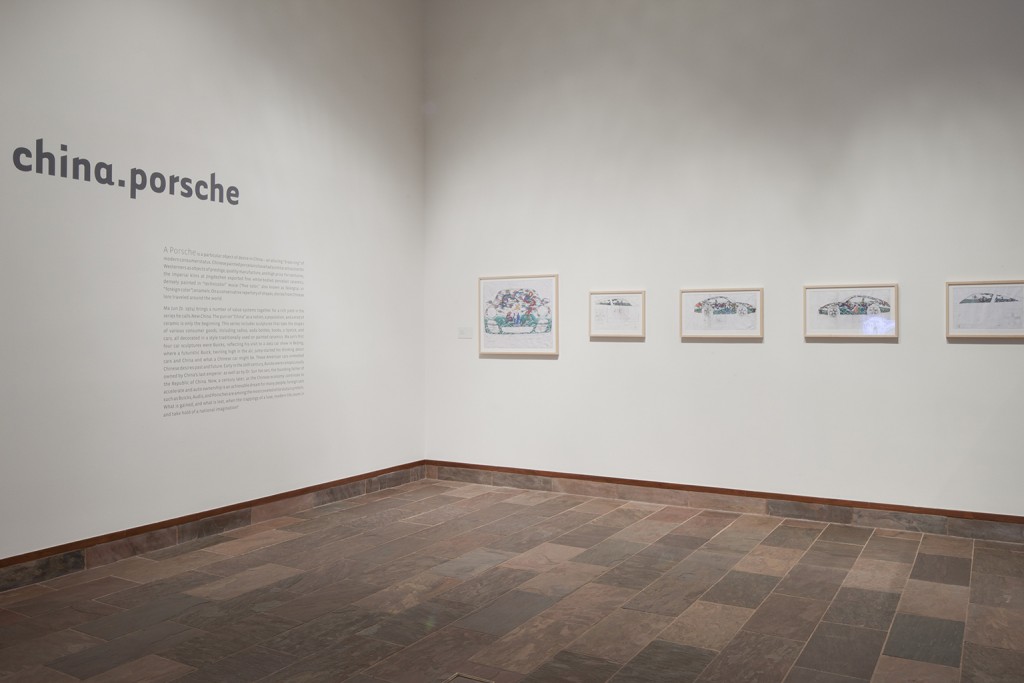

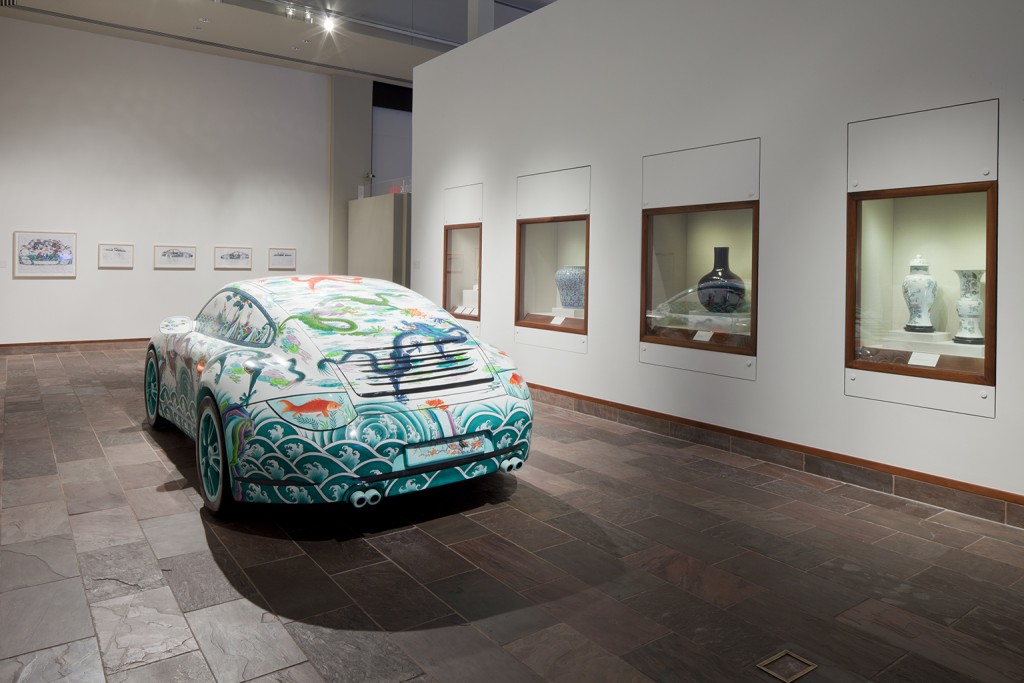

A Porsche is a particular object of desire in China—an alluring “gold ring” of modern consumer status. Chinese painted porcelains have had a similar attraction for Westerners as objects of prestige, quality manufacture, and high price. For centuries the Imperial kilns at Jingdezhen exported fine white-bodied porcelain ceramics densely painted in “technicolor” wucai (“five color”, also known as falangcai, or “foreign color”) enamels. On a conservative repertory of shapes, stories from Chinese lore traveled around the world.
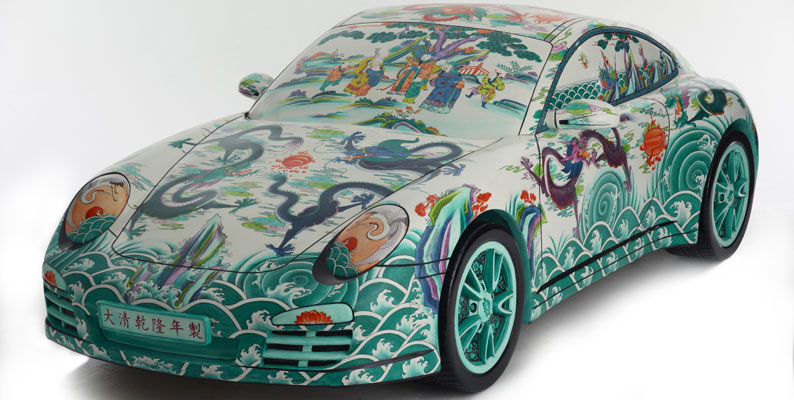
Ma Jun, (b. 1974) brings a number of value systems together for a rich yield in the series he calls “New China.” The pun on “China” as both a people and a kind of ceramic is only the beginning. Sparks fly in many directions—toward the past and future, from desire to new desire, from change to immortality, from aspiration to acceptance, from import to export, from creative demands to traditional requirements, from common values for long-life and happiness to warring and uneasy gods.
A Porsche is a particular object of desire in China—an alluring “gold ring” of modern consumer status.
The “New China“ series includes various shapes—including radios, soda bottles, books, a lipstick, and cars—all in a style traditionally used on painted ceramics. Ma Jun’s first four car sculptures were Buicks, reflecting his visit to a car show in Beijing in 2002, where a futuristic Buick twirling high in the air started his thinking about cars and China—about desires past and future—about what a Chinese car might be. A Porsche was suggested by Trammell S. Crow for the series, and china.porsche was commissioned and realized in conjunction with the Crow Collection.
The body of china.porsche is a fiberglass cast (mold) of a hand-carved wooden model, shaped to look like a Porsche 911. The artist covers the fiberglass body with white paint to yield the equivalent of a ceramic ground. On the white ground he paints narrative and decorative patterns derived from Qianlong period (1736-1795) ceramics, a time he sees as an important crossroad in Chinese history. The dominant narrative seems at first to be the travel of the Eight Immortals Crossing the Sea, rich enough in its array of curious characters, all originally common folk with special skills. But what then to make of ten figures? The artist, who is an M.F.A. graduate of the Central Academy of Fine Arts in Beijing, adds two additional figures from a larger narrative tradition celebrating wishes for prosperity and long life to meet his creative demands for balance and form, and further enriches the story and the design by nine writhing dragons—eight on the sides of the car and one on the roof.
Let china.porsche take you for a spin.
